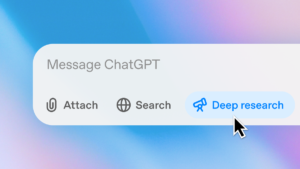Utilizing Google’s Deep Research: A Guide to the AI Research Tool

Aarush and Mukund’s AI Idea
Aarush and software engineer Mukund Sridhar came up with a groundbreaking idea to create an artificial intelligence system that could research options for users and generate detailed reports. “After a few weeks of brainstorming and prototyping with his team, Mukund called me into a room excitedly saying, ‘We did it,’” Aarush recalls. They tested the AI by asking it to find soccer and art summer camps available for kids in the New York area, comparing all the relevant details. “It delivered impressive results,” Mukund mentions, adding that the AI found information on over 20 camps. Consequently, they realized they had developed something truly remarkable.
Introducing Deep Research
This innovative tool is known as Deep Research. Now that more users have the opportunity to try it, Aarush has offered tips to maximize its efficiency.
How to Utilize Deep Research Effectively
1. Identify the Need for Deep Research
Aarush explains that Deep Research is particularly beneficial when a task involves extensive browsing or managing multiple tabs. “Think of it as a way to elevate your understanding of a topic,” Mukund adds. If you’re looking for a quick answer, however, you might not require this tool. For instance, if you’re simply curious about the term “fintech,” the standard chat option in Gemini would suffice. On the other hand, if you’re a venture capitalist needing to familiarize yourself with the latest trends in the fintech industry before a meeting with a startup, Deep Research can be remarkably beneficial.
2. Begin with Basic Queries
Despite its name, “Deep” Research doesn’t require users to overthink their initial questions. Aarush encourages users not to stress. “You can always tweak your question afterward,” he states. Before Deep Research starts collecting information, it presents you with a research plan, allowing you to modify it if needed. By selecting the “Edit plan” option, you can instruct Deep Research to expand on specific areas or take a new approach—all through everyday language. You don’t have to be an expert in crafting prompts. Simply communicating your ultimate goal—like “I want to find an amazing summer camp in New York for my 10-year-old”—is sufficient for Deep Research to efficiently handle the task.
Additional Tips for Success with Deep Research
3. Use Specific Details
Providing specific details can significantly improve the effectiveness of your research. The more precise your query, the better results you’ll receive. For example, instead of asking for “summer camps,” specify “soccer camps for kids aged 8-12 in Brooklyn.” This level of detail can help the AI refine its search and present you with options that closely match your needs.
4. Review and Refine Outputs
Once you receive the results from Deep Research, take the time to go through the information carefully. If something doesn’t meet your expectations, you have the option to refine your query or ask additional questions. This iterative process ensures that you continuously improve the relevance and quality of the results.
5. Explore Related Topics
An excellent way to enrich your understanding is by exploring related topics. If your initial inquiry is about summer camps, you might find it beneficial to explore topics such as child development in arts or sports, or even safety guidelines for camps. Deep Research can help by drawing connections and providing insights across various subjects.






